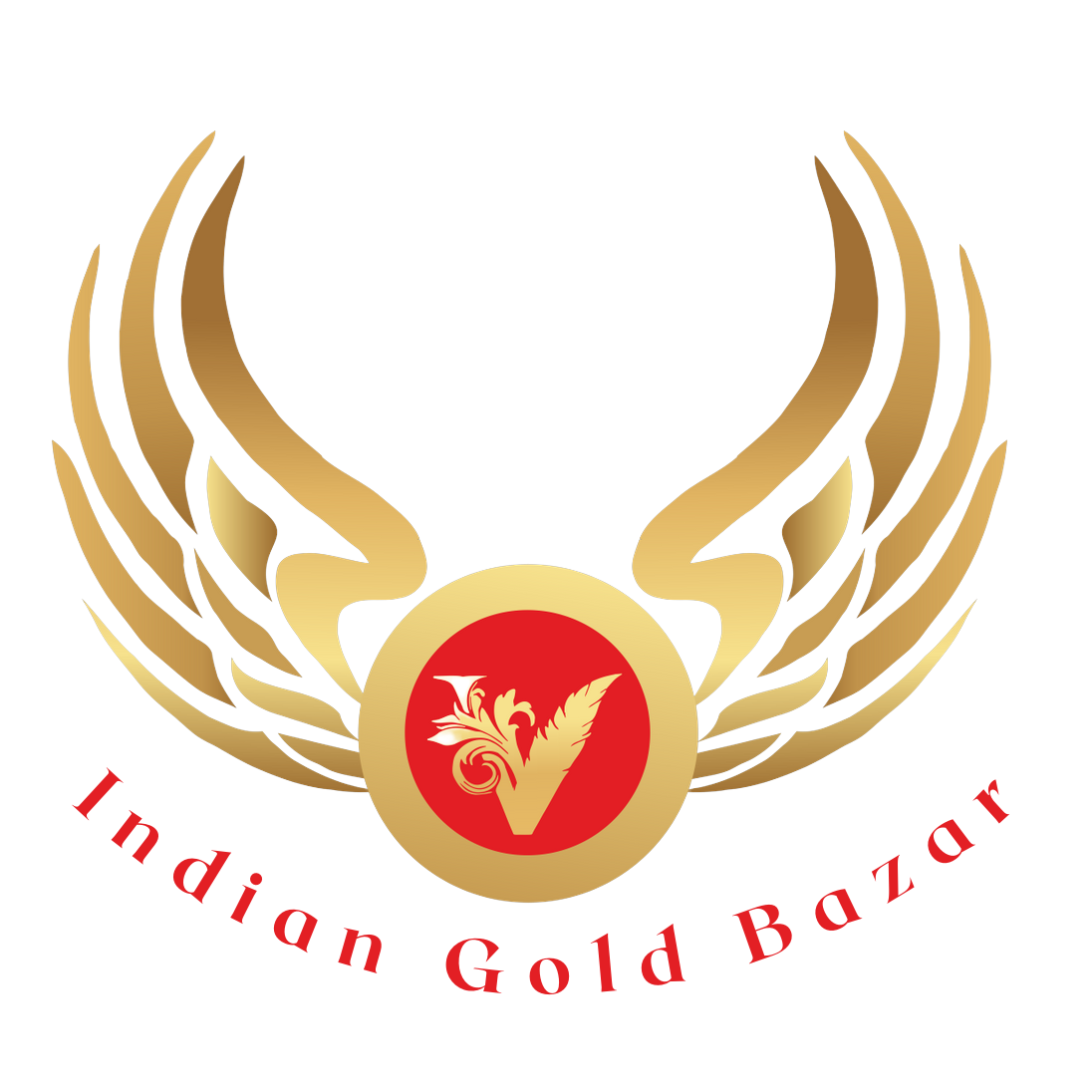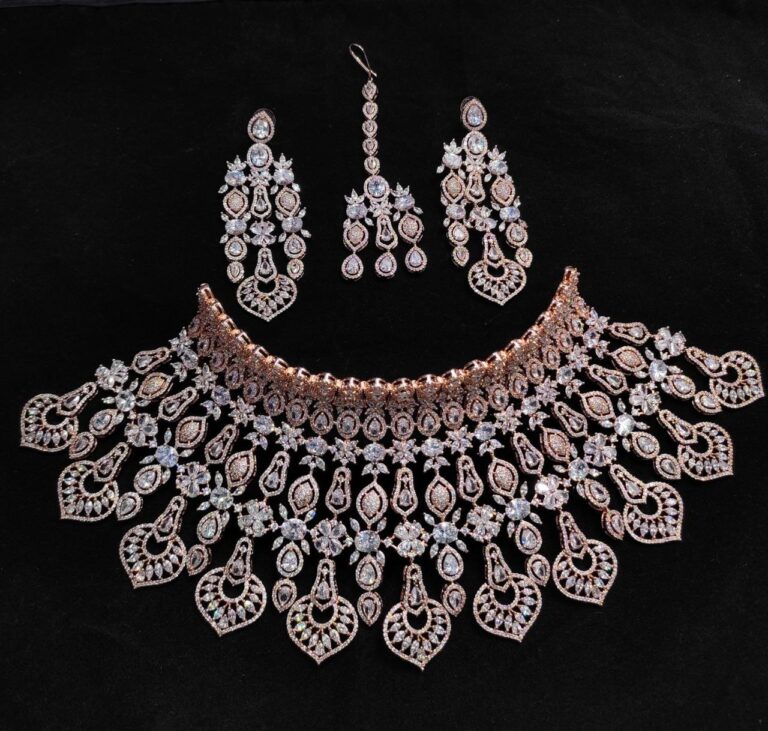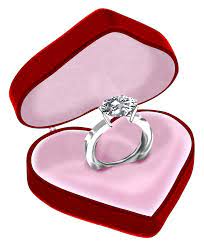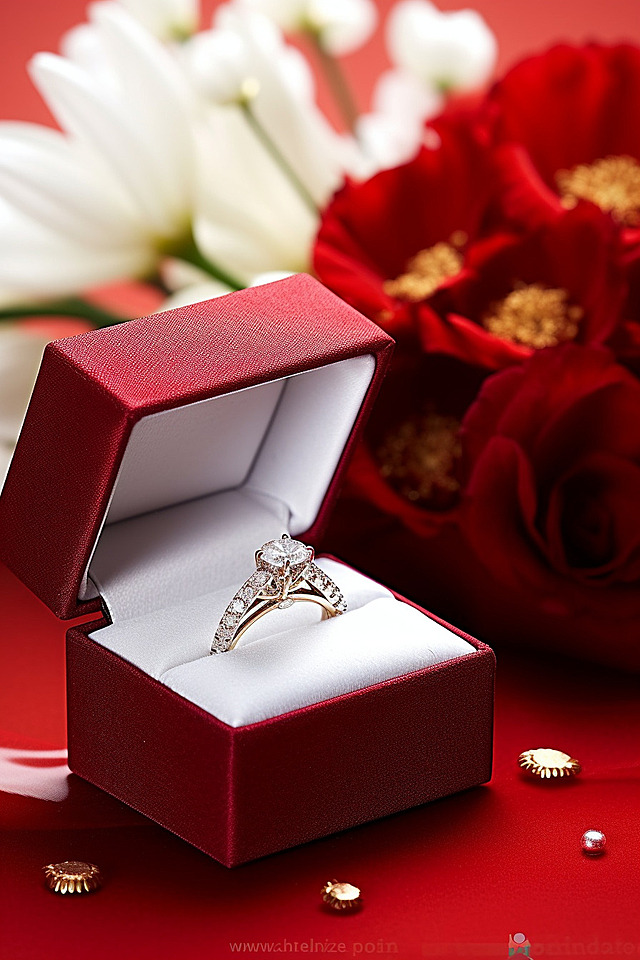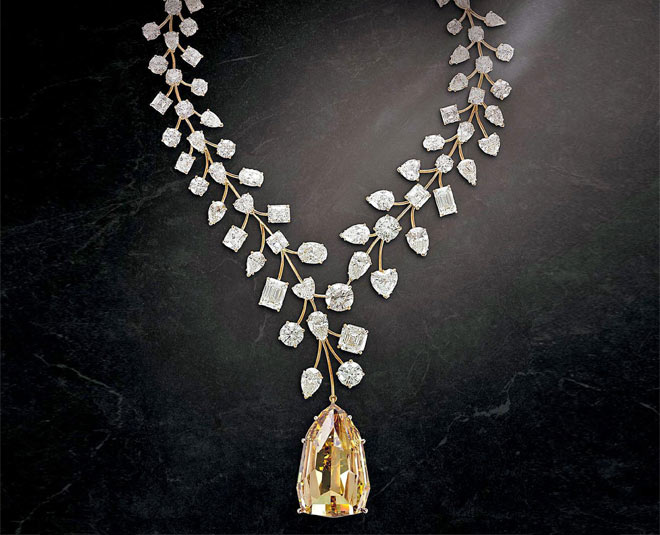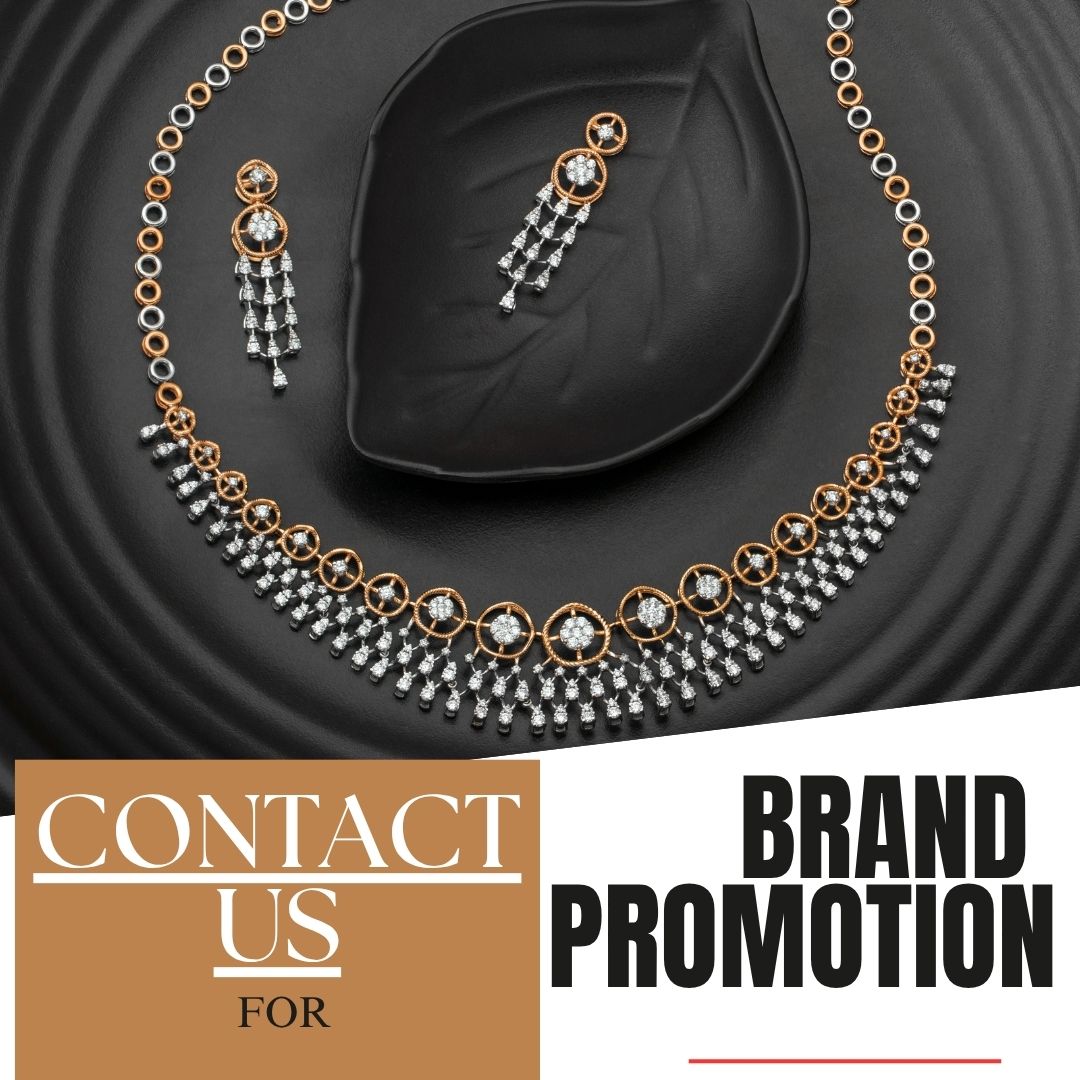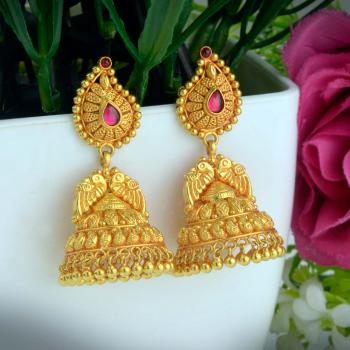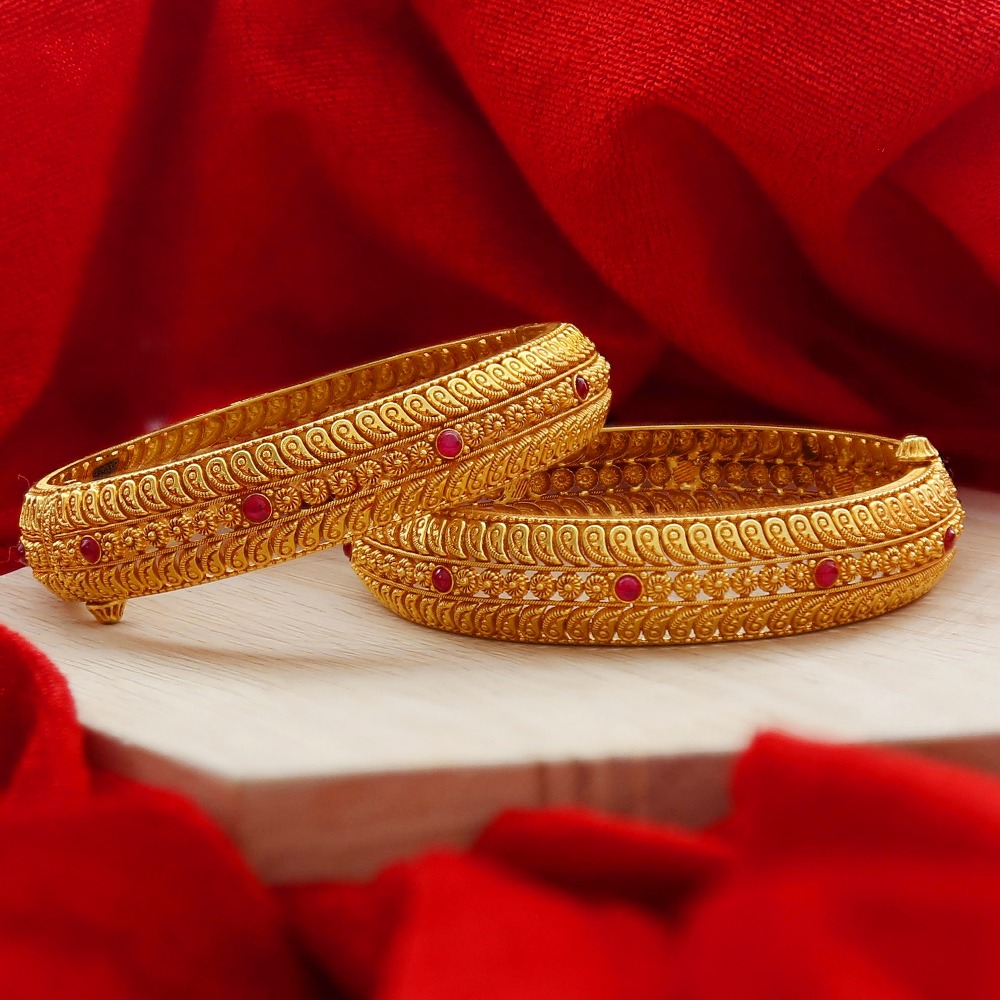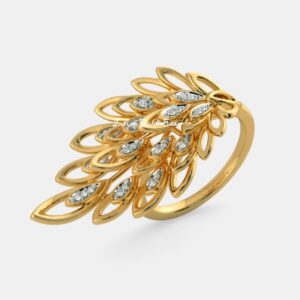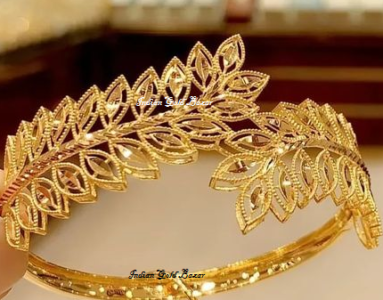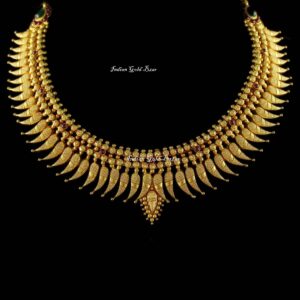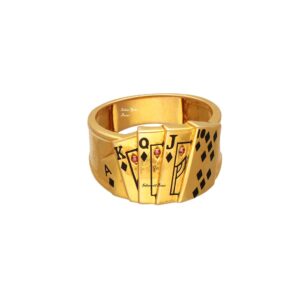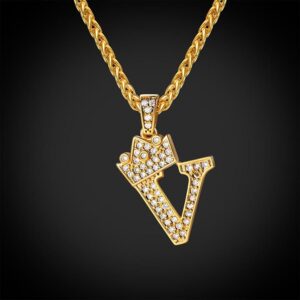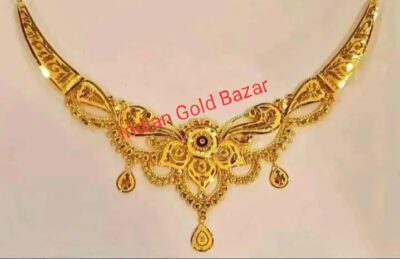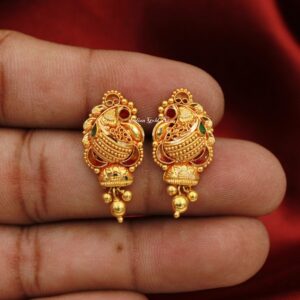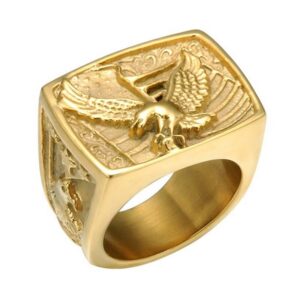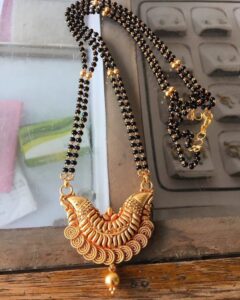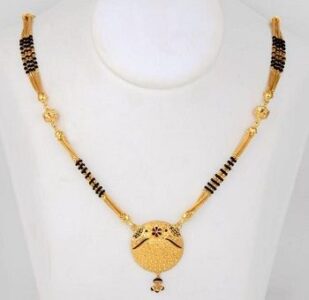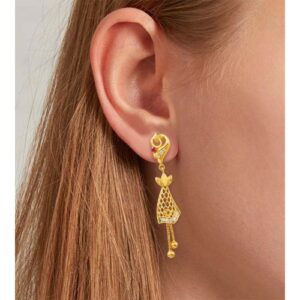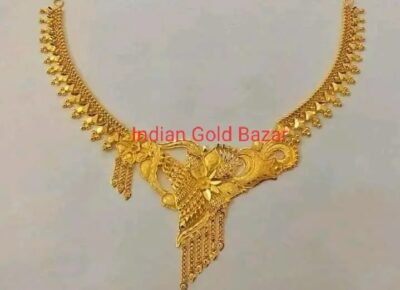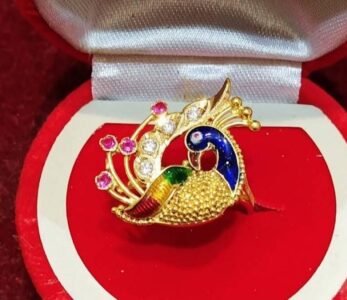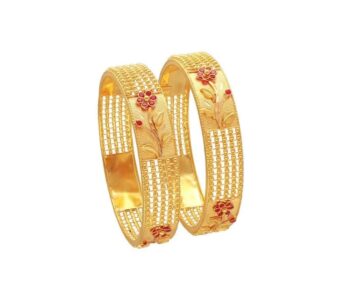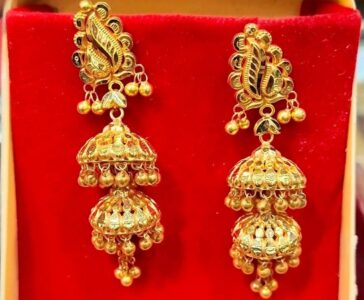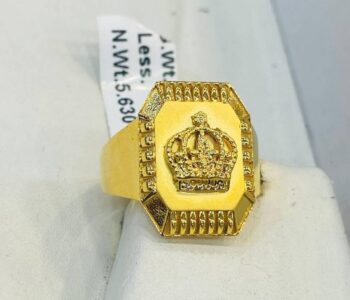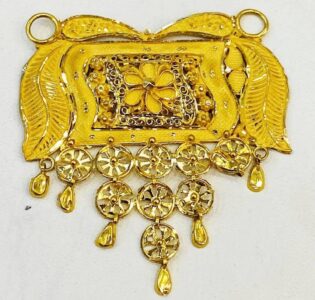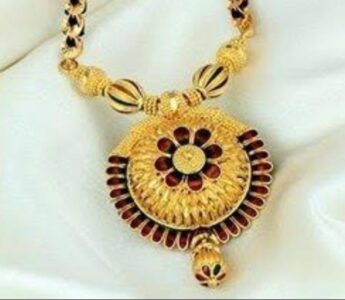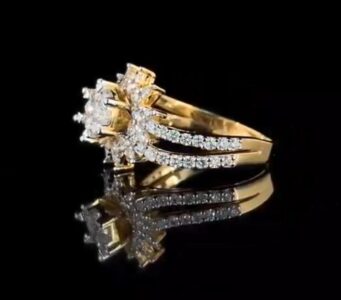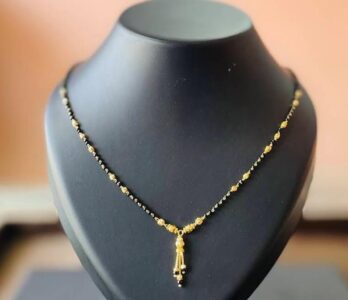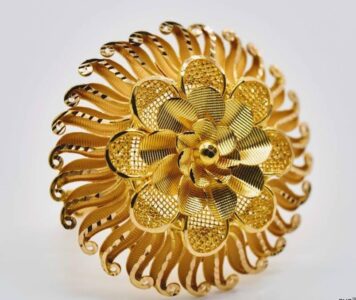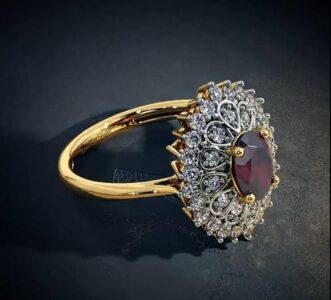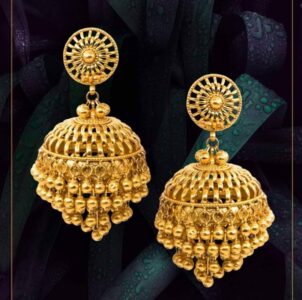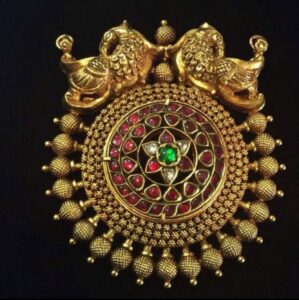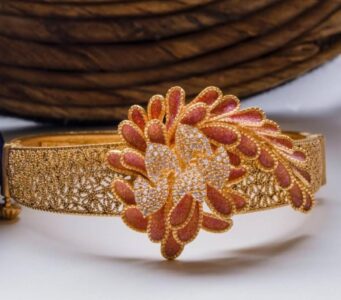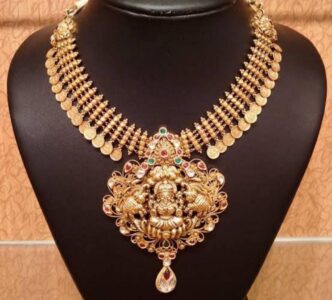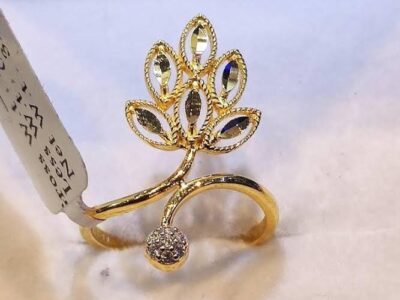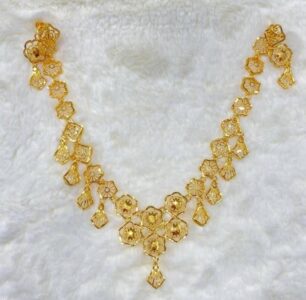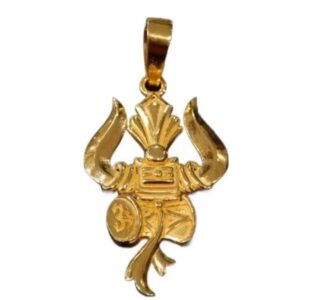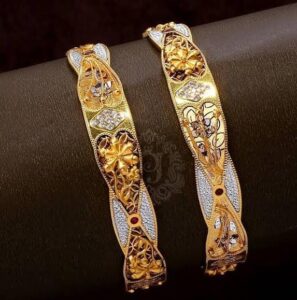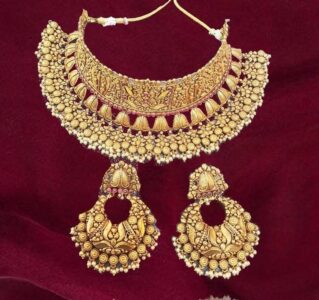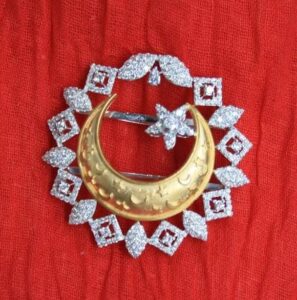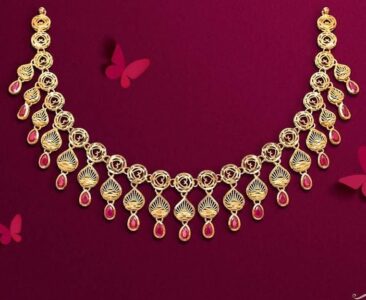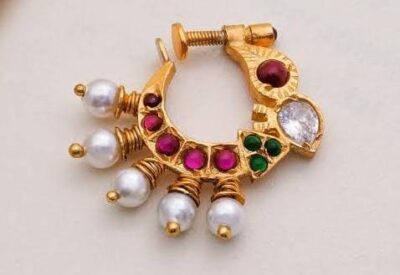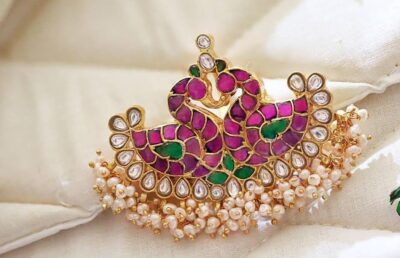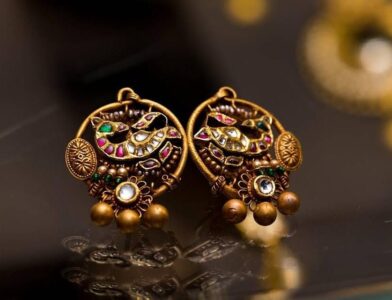- BLOG / ARTICLE
- Gold Rate/ Gold Price
- Earring/Gold Earring/Earring Design/Gold Earring Price
- Ring/ Gold Ring/ Gold Ring Design
- Necklace/Gold Necklace/ 22K Gold Necklace
- Bangle/Gold Bangle Design/18K-22K GOLD BANGLE
- Mangalsutra/Traditional gold Mangalsutra Design
- Diamond Jewelry/Diamond Rings/Diamond Necklace
Home >>Diamond Design Page>>Diamond Blog
Modern Diamond >> Trending Diamond >> Traditional Diamond
Diamond jewelery
Diamond jewelry is a timeless and luxurious choice! From elegant diamond rings to stunning necklaces, bracelets, earrings, and more, diamonds have long been cherished for their brilliance, rarity, and enduring beauty. They come in various cuts like round, princess, cushion, and emerald, each offering a unique sparkle and style. Whether it's for a special occasion like an engagement, anniversary, or simply to add a touch of glamour to everyday wear, diamond jewelry holds a special place in many hearts. The 4Cs—cut, color, clarity, and carat—are crucial factors that determine a diamond's quality and value, guiding individuals in choosing the perfect piece that resonates with their style and preferences.
What is the most popular jewellery type?
The popularity of jewelry types can vary over time and across cultures. However, some timeless and universally beloved types of jewelry include:
- Rings: Symbolic for engagements, weddings, or just fashionable accessorizing.
- Necklaces: Various styles like pendants, chains, chokers, etc., are popular among both men and women.
- Earrings: Ranging from studs to hoops, earrings are a classic accessory.
- Bracelets: They come in various forms like bangles, cuffs, charm bracelets, etc.
The most popular type often depends on current fashion trends, cultural traditions, personal preferences, and the purpose of wearing the jewelry. For instance, engagement rings might be very popular in certain contexts, while simple, elegant necklaces or earrings might be more universally favored for everyday wear.
What is the most trending jewelry?
Trends in jewelry are constantly evolving, influenced by fashion, culture, and even technology. As of my last update in 2022, a few trends were gaining popularity:
- Layered Necklaces: Wearing multiple necklaces of varying lengths and styles for a layered look was quite trendy.
- Sustainable and Ethical Jewelry: People were increasingly interested in jewelry made from recycled materials or ethically sourced gemstones/metals.
- Statement Earrings: Bold, oversized earrings or mismatched pairs were making a statement.
- Vintage and Retro Styles: Jewelry inspired by past eras, like Art Deco or Victorian designs, was gaining traction.
- Personalized and Customized Pieces: Jewelry that could be customized with initials, names, or significant dates held appeal.
However, trends can change rapidly in the fashion world. New materials, innovative designs, and cultural influences often shift what's considered "trendy." Checking out current fashion magazines, social media influencers, or jewelry designer collections can give you an idea of the latest trends in jewelry.
What jewelry is popular right now 2023?
I don't have real-time access to current trends, as my last update was in 2022. However, some trends tend to persist or evolve over time. Here are some jewelry trends that might be popular in 2023 based on past trends:
- Sustainable and Ethical Jewelry: The focus on eco-friendly and ethically sourced materials might continue to grow, with more demand for recycled metals and responsibly mined gemstones.
- Bold and Colorful Pieces: Vibrant gemstones or colorful enamel might be in vogue, adding a pop of color to jewelry collections.
- Mixing Metals: Combining different metals like gold, silver, and rose gold in a single piece or across multiple pieces for an eclectic look.
- Layering and Stacking: Continuing the trend of layering necklaces, stacking rings, or bracelets for a personalized and dynamic style.
- Innovative Designs: Jewelry that incorporates innovative designs, such as unique shapes, asymmetry, or unexpected materials, could catch attention.
Remember, these trends can vary by region, personal taste, and the influence of celebrities, influencers, and fashion designers. Checking out current fashion magazines, following jewelry designers on social media, or exploring popular jewelry brands' collections might give you a clearer idea of what's trending right now.
What is the trend in diamond jewelry in 2024?
I can't provide real-time updates as my information is current up until 2022. However, the trends in diamond jewelry often follow broader fashion and design trends. Some aspects that might influence diamond jewelry trends in 2024 could include:
- Sustainability: The focus on ethically sourced and sustainable diamonds might continue to grow. Lab-grown diamonds, which are environmentally friendly and often more affordable, might gain more popularity.
- Unique Cuts and Shapes: Unconventional diamond cuts or shapes beyond the classic round brilliant might become more sought after. Fancy shapes like ovals, pear cuts, and emerald cuts could trend.
- Mixing Diamonds with Colored Gemstones: Combining diamonds with colorful gemstones to create unique and vibrant pieces might become more popular for those seeking a distinctive look.
- Customization and Personalization: Custom-designed diamond jewelry, allowing individuals to create unique pieces that reflect their style, personality, or significant milestones, could be a trend.
- Vintage and Artisanal Designs: Jewelry inspired by vintage styles or crafted by artisans might continue to attract attention for their craftsmanship and uniqueness.
Keep an eye on the latest releases from renowned jewelry designers and brands, as well as fashion shows and industry publications, for a more accurate reflection of the diamond jewelry trends in 2024. Trends can also vary based on cultural influences and regional preferences.
What is the trend in jewelry in 2023?
While I don't have real-time updates, the trends in jewelry can often reflect broader fashion movements and shifts in consumer preferences. Here are some trends that were gaining traction leading up to 2023:
- Sustainable and Ethical Jewelry: The focus on environmentally friendly materials, such as recycled metals and ethically sourced gemstones, continued to grow. Consumers were increasingly drawn to jewelry with responsible sourcing and production methods.
- Statement Pieces: Bold, oversized jewelry pieces, including large earrings, chunky necklaces, and statement rings, were making a comeback, adding drama and personality to outfits.
- Vintage and Retro Styles: Designs inspired by different eras, such as Art Deco, Victorian, or '80s/'90s nostalgia, were popular. Vintage-inspired pieces or actual vintage jewelry were sought after for their unique aesthetic.
- Layering and Stacking: Layering necklaces, stacking rings, and bracelets remained a strong trend, allowing for personalized and creative combinations.
- Personalized and Customized Jewelry: Pieces that could be customized with initials, names, birthstones, or meaningful symbols continued to be in demand, reflecting individual stories and sentiments.
Fashion trends can evolve rapidly, and new styles might have emerged since then. Checking out current fashion magazines, following influencers, or exploring the latest collections from jewelry designers and brands can give you a better insight into the prevailing jewelry trends in 2023.
What kind of jewelry is trending now in India?
India has a rich tradition of jewelry, and trends often blend traditional craftsmanship with modern designs. As of my last update, some trends in Indian jewelry included:
- Polki and Kundan Jewelry: Traditional styles like polki (uncut diamond) and kundan (gemstone-set) jewelry remained popular, especially for weddings and special occasions.
- Temple Jewelry: Inspired by temple art and architecture, this type of jewelry features intricate designs, often with motifs like gods, goddesses, and nature elements.
- Antique and Vintage Designs: Vintage-inspired pieces or those reminiscent of bygone eras, like Victorian or Mughal styles, were gaining attention for their timeless appeal.
- Layered Necklaces: Like in many other regions, layering necklaces of varying lengths and styles was a popular trend, offering a contemporary touch to traditional attire.
- Contemporary Fusion Jewelry: Blend of traditional Indian elements with modern designs, catering to a younger audience looking for versatile pieces suitable for both traditional and western wear.
- Colorful Gemstones: Jewelry adorned with vibrant gemstones, including emeralds, rubies, and sapphires, to add color and richness to the designs.
Indian jewelry trends can vary based on regions, festivals, and occasions. Designs might also be influenced by Bollywood celebrities, fashion designers, and cultural festivities. Checking out Indian fashion magazines, following Indian jewelry designers, or exploring collections from renowned Indian jewelry brands can provide more insights into the current trends.
What is the future of diamonds?
The future of diamonds is likely to evolve along several key trajectories:
- Sustainability: There's a growing demand for ethically sourced and sustainable diamonds. Lab-grown diamonds, which have a lower environmental impact compared to traditional mining, are gaining popularity. Consumers are increasingly conscious of ethical and environmental considerations when purchasing diamonds.
- Technology and Innovation: Continued advancements in technology are shaping the diamond industry. This includes improvements in lab-grown diamond production, blockchain technology to track a diamond's journey from mine to market, and innovations in diamond cutting and shaping techniques.
- Customization and Personalization: Consumers seek unique and personalized experiences. Custom-designed diamonds, where individuals can create bespoke pieces tailored to their preferences, could become more prevalent.
- Value Beyond Tradition: While diamonds have long been associated with engagements and milestones, their significance is expanding. Diamonds might increasingly become symbols of self-expression, empowerment, and individuality rather than just traditional markers of love and commitment.
- Challenges and Adaptation: The diamond industry faces challenges such as changing consumer preferences, economic fluctuations, and competition from alternative gemstones. Adaptation to these changes through innovative marketing strategies, product diversification, and sustainability initiatives will likely be crucial for the industry's future.
Overall, while diamonds are likely to remain highly valued and cherished, the industry will continue to adapt to meet evolving consumer preferences, sustainability concerns, and technological advancements.
What is the diamond trend in earrings 2024?
Predicting specific trends for a future year like 2024 is challenging as it depends on evolving fashion influences. However, trends in diamond earrings often follow broader jewelry and fashion trends. Here are some possible trends that might shape diamond earrings in 2024:
- Unique and Asymmetric Designs: Earrings featuring asymmetric or mismatched diamond shapes, sizes, or settings could gain popularity. This trend adds a playful and contemporary touch to traditional diamond earrings.
- Sustainable and Ethical Earrings: The demand for ethically sourced and sustainable diamonds might continue to influence earring designs. Consumers could seek earrings made with lab-grown diamonds or responsibly mined stones.
- Innovative Settings: Creative and unique settings that showcase diamonds in unconventional ways might emerge. This could include geometric designs, abstract settings, or innovative uses of metalwork to highlight the diamonds.
- Versatile Styles: Earrings that offer versatility, such as convertible or modular designs, allowing wearers to transform their earrings from studs to dangles or hoops, might become popular for their adaptability.
- Mixing Diamonds with Other Gemstones: Combining diamonds with colorful gemstones or using contrasting materials alongside diamonds in earring designs might create eye-catching and unique pieces.
Fashion trends evolve, and what's in vogue can be influenced by various factors such as cultural shifts, designer creations, and celebrity influences. Keeping an eye on fashion shows, designer collections, and industry publications closer to 2024 can provide a more accurate insight into the specific trends dominating diamond earrings that year.
What is a popular trend in 2023?
As of my last update in 2022, several trends were anticipated to shape various aspects of life in 2023. However, trends can evolve based on current events, societal shifts, and cultural changes. Some anticipated trends for 2023 included:
- Sustainability: The focus on sustainability was expected to continue across various industries, including fashion, technology, and consumer goods. Eco-friendly products, ethical sourcing, and environmentally conscious practices were gaining momentum.
- Remote Work Evolution: With the increasing normalization of remote work, hybrid work models were expected to become more prevalent. Companies were anticipated to adopt flexible work arrangements, leveraging technology for collaboration and productivity.
- Digital Transformation: Rapid advancements in technology were poised to continue driving digital transformation across sectors. Innovations in AI, automation, and virtual/augmented reality were expected to shape how businesses operate and interact with consumers.
- Wellness and Mental Health: The focus on mental health and holistic wellness was gaining importance. Companies and individuals were anticipated to prioritize mental health support, self-care practices, and a better work-life balance.
- Personalization and Customization: Tailored experiences and personalized products/services were becoming increasingly popular. From AI-driven recommendations to customizable products, consumers sought more individualized offerings.
These trends were predicted based on ongoing shifts in consumer behavior, technology advancements, and societal changes. However, actual trends can vary due to unforeseen events or emerging influences. Following industry reports, staying updated with current news, and observing changes in consumer preferences can provide a clearer picture of the prevailing trends in 2023.
What is the most expensive diamond in the world 2023?
As of my last update in 2022, the "Pink Star" diamond held the record for the most expensive diamond ever sold at auction. It was sold for over $71 million USD in 2017 by Sotheby's Hong Kong. However, the world of rare and valuable diamonds is dynamic, and new discoveries or auctions can change these records.
In 2023, there might have been new discoveries or auctions of exceptionally rare diamonds that could have surpassed previous records. The value of a diamond can depend on various factors including its size, color, clarity, and historical significance. Keeping up with recent auction results or significant diamond discoveries can provide information about the most expensive diamonds in the world in 2023.
What's trendy right now?
Trends are constantly evolving, influenced by various factors such as fashion shows, social media, and cultural shifts. As of my last update in 2022, some trends were gaining popularity:
- Sustainability: There was a growing emphasis on eco-friendly and sustainable products across industries, including fashion and consumer goods. Brands focusing on sustainable materials and ethical practices were gaining traction.
- Athleisure and Comfort Wear: Comfortable yet stylish clothing, often blurring the lines between athletic wear and casual wear, was a prevalent trend. People sought versatility and comfort in their clothing choices.
- Digital Fashion and NFTs: The rise of digital fashion and non-fungible tokens (NFTs) in the fashion industry was becoming more prominent, creating a new space for unique digital designs and collectibles.
- Gender-Neutral Fashion: The move towards gender-inclusive clothing and designs continued to gain momentum, with more brands offering gender-neutral or unisex collections.
- Tech-Integrated Fashion: Wearable technology, such as smartwatches, interactive clothing, and accessories with tech features, was increasingly integrated into fashion.
These trends might have evolved or new trends emerged since then. To stay updated on the current trends, exploring fashion magazines, following influencers on social media platforms, and keeping an eye on the latest collections from renowned fashion designers can provide insights into what's trendy right now.
Why is diamond used for jewellery?
Diamonds have several qualities that make them highly desirable for jewelry:
- Hardness: Diamonds are one of the hardest natural substances, scoring a perfect 10 on the Mohs scale. This means they are extremely durable and resistant to scratches, making them suitable for everyday wear.
- Brilliance and Sparkle: Diamonds have exceptional optical properties, reflecting and refracting light in a way that creates a dazzling sparkle and brilliance. This unique quality adds to their allure and makes them highly sought after for jewelry.
- Rareness and Exclusivity: Natural diamonds are relatively rare and can take billions of years to form under specific geological conditions. This rarity contributes to their high value and appeal as symbols of luxury and exclusivity.
- Symbolism: Diamonds are often associated with love, commitment, and eternity, making them a popular choice for engagement rings and other sentimental jewelry pieces.
- Versatility: Diamonds come in various shapes, sizes, and colors, offering versatility for different jewelry designs and styles, catering to different preferences and tastes.
- Longevity: Diamonds are enduring and retain their brilliance and value over time, making them a valuable investment as well as a cherished heirloom.
These combined factors contribute to the enduring popularity of diamonds in the world of jewelry, making them a coveted choice for adornment and symbolizing special moments in people's lives.
Which type of diamond is used in jewellery?
In jewelry, various types of diamonds are used, each with its own unique characteristics. The most commonly used diamonds in jewelry include:
- Natural Diamonds: These diamonds are mined from the Earth and are formed through natural processes over millions to billions of years. Natural diamonds come in various sizes, shapes, and qualities, and they are highly prized for their rarity and beauty.
- Lab-Created Diamonds: These diamonds are produced in a controlled laboratory environment that replicates the natural conditions under which diamonds form. They have the same physical, chemical, and optical properties as natural diamonds. Lab-created diamonds are becoming increasingly popular due to their ethical and sustainable aspects and can be used in jewelry just like natural diamonds.
- Treated or Enhanced Diamonds: Some diamonds undergo treatments or enhancements to improve their appearance. Common treatments include laser drilling to remove inclusions, fracture filling to improve clarity, or high-pressure high-temperature (HPHT) treatment to enhance color. These treated diamonds can be used in jewelry, but it's essential to disclose any treatments for transparency.
The choice of diamond type often depends on factors like budget, ethical considerations, desired characteristics (such as color, clarity, and size), and personal preferences. All these types of diamonds can be used in jewelry, offering a range of options to suit different needs and tastes.
What are most diamonds used in jewellery?
Natural diamonds are the most commonly used type of diamonds in jewelry. These diamonds are mined from the Earth and have been the traditional choice for engagement rings, earrings, necklaces, and other jewelry pieces for centuries. They come in various shapes, sizes, and qualities, allowing for a wide range of options in jewelry design.
However, lab-created diamonds have been gaining popularity in recent years due to advancements in technology and their ethical and environmental benefits. They offer the same brilliance, hardness, and beauty as natural diamonds but are created in controlled laboratory environments rather than being mined from the earth.
While lab-created diamonds are increasingly being used in jewelry, natural diamonds still dominate the market due to their historical significance, natural rarity, and enduring appeal. The choice between natural and lab-created diamonds often depends on personal preferences, ethical considerations, budget, and the specific characteristics desired for the jewelry piece.
What is a diamond called?
A diamond is a precious gemstone composed of carbon atoms arranged in a specific crystal structure. Chemically, it is a pure form of carbon. The name "diamond" itself is derived from the Greek word "adamas," meaning "unbreakable" or "invincible," reflecting its hardness and durability.
Diamonds are renowned for their exceptional brilliance, transparency, and ability to disperse light into colors, making them highly valued for jewelry and as symbols of love, commitment, and luxury.
What is the Speciality of diamond?
Diamonds possess several unique characteristics that contribute to their specialty:
- Hardness: Diamonds are one of the hardest natural substances known to humans. Their hardness is measured as a perfect 10 on the Mohs scale, making them highly resistant to scratching and abrasion.
- Brilliance and Sparkle: Diamonds have excellent optical properties that allow them to refract and reflect light, creating a brilliant sparkle and fire. This unique play of light contributes to their attractiveness and desirability in jewelry.
- Rarity and Value: Natural diamonds are relatively rare in nature, taking millions to billions of years to form under specific geological conditions. Their scarcity contributes to their high value and status as prized gemstones.
- Symbolism: Diamonds often symbolize love, commitment, and eternity, making them popular choices for engagement rings and other sentimental jewelry pieces.
- Versatility: Diamonds come in various colors, sizes, and shapes, offering versatility for different jewelry designs and styles, catering to diverse preferences.
- Longevity: Due to their exceptional hardness and durability, diamonds retain their brilliance and value over time, making them a valuable investment and cherished heirloom.
These special qualities collectively contribute to the allure and specialty of diamonds, making them highly coveted and esteemed gemstones in the world of jewelry and beyond.
Which cut is best in diamonds?
Determining the "best" cut for a diamond often depends on personal preferences and what qualities you prioritize. However, there are several popular diamond cuts known for their exceptional brilliance and beauty:
- Round Brilliant Cut: This is the most popular and classic diamond shape. The round brilliant cut is designed to maximize the diamond's sparkle and brilliance through precise proportions and facets. It's known for its timeless appeal and exceptional light performance.
- Princess Cut: A square or rectangular cut with numerous facets, the princess cut combines a modern look with excellent brilliance. It's a popular choice for engagement rings and offers a good balance between sparkle and a sleek, contemporary appearance.
- Emerald Cut: This rectangular-shaped cut features a step-cut faceting style that emphasizes clarity and the diamond's natural crystalline structure. The emerald cut showcases elegant flashes of light rather than intense sparkle.
- Cushion Cut: Known for its rounded corners and larger facets, the cushion cut combines a classic, antique look with remarkable brilliance. It can appear slightly more vintage and is often chosen for its romantic charm.
- Oval Cut: The oval cut is a modified brilliant-cut, resembling a sparkling elongated circle. It offers a unique look and can create the illusion of greater size due to its elongated shape.
Each cut has its unique attributes in terms of brilliance, fire, and appearance. When choosing the best diamond cut, consider factors such as personal style, the setting of the jewelry piece, budget, and the specific qualities that appeal most to you or the recipient. Consulting with a reputable jeweler can also help you find the perfect diamond cut for your preferences and requirements.
Which diamond is best to wear?
The best diamond to wear depends on personal preferences, the intended use, and the qualities you prioritize. Here are a few considerations:
- Natural Diamonds: These are traditional and come in various shapes, sizes, and qualities. They are often chosen for their rarity, natural beauty, and status.
- Lab-Created Diamonds: These diamonds have the same physical and chemical properties as natural diamonds but are ethically and sustainably produced in a controlled environment. They can be an excellent choice for those seeking a more environmentally friendly option without compromising on quality.
- Diamonds with Ideal Characteristics: When selecting a natural or lab-created diamond, consider the 4Cs: cut, color, clarity, and carat weight. Look for a balance between these characteristics based on your preferences. For example, some might prioritize brilliance (cut) over size (carat weight), while others might focus on clarity or color.
- Purpose and Setting: The best diamond to wear also depends on the jewelry piece and its purpose. For an engagement ring, you might prioritize a balance between brilliance and durability. For earrings or necklaces, brilliance might be more important.
- Certification: Whether choosing a natural or lab-created diamond, ensure it comes with proper certification from reputable gemological laboratories like GIA (Gemological Institute of America) or AGS (American Gem Society). This certification ensures the diamond's quality and authenticity.
Ultimately, the best diamond to wear is one that aligns with your preferences, lifestyle, and values. Whether it's a natural or lab-created diamond, one with exceptional brilliance or a particular shape that speaks to you, selecting a diamond should be a choice that brings joy and matches your desired qualities in a gemstone.
Which diamond is original?
The term "original" concerning diamonds might refer to natural diamonds, as they are formed naturally within the Earth's crust over millions to billions of years. Natural diamonds are mined from the Earth and have been valued as gemstones for centuries due to their rarity, beauty, and unique formation process.
Lab-created diamonds, on the other hand, are also real diamonds but are produced in controlled laboratory environments, replicating the natural conditions under which diamonds form. They have the same chemical composition, crystal structure, and physical properties as natural diamonds.
Both natural and lab-created diamonds are "original" in their own right. Natural diamonds are the original products of geological processes, formed naturally in the Earth. Lab-created diamonds, while not formed through geological processes, are original in the sense that they are created using advanced technology to replicate the natural diamond-growing process.
The distinction lies in their origin: one formed naturally over an extended period underground, and the other created in a controlled environment by humans. Both types of diamonds have their own merits and are genuine diamonds with distinct characteristics, catering to different preferences, values, and ethical considerations.
Why is diamond jewellery very costly?
Diamond jewelry tends to be costly for several reasons:
- Scarcity: Natural diamonds are relatively rare in nature and take millions to billions of years to form under specific geological conditions. This rarity contributes to their high value and cost.
- Quality and Rarity Factors: The value of a diamond is influenced by the 4Cs: cut, color, clarity, and carat weight. Diamonds with excellent characteristics in these areas are more valuable and thus command higher prices.
- Mining and Production Costs: Mining diamonds involves complex and expensive processes, including exploration, extraction, sorting, and processing. Additionally, the costs associated with cutting, polishing, and grading diamonds add to their overall price.
- Market Demand and Branding: Diamonds have been culturally associated with luxury, love, and significant life events like engagements and weddings. The demand for diamond jewelry, especially in certain cuts, styles, or from renowned brands, can drive prices higher due to their perceived value and desirability.
- Marketing and Distribution: The diamond industry invests significantly in marketing and distribution, which includes advertising campaigns, retail operations, and maintaining a global market presence. These costs are often reflected in the price of diamond jewelry.
- Certification and Traceability: Authentic diamonds come with certification from reputable gemological laboratories, ensuring their quality and authenticity. The certification process adds to the overall cost.
- Ethical and Sustainable Practices: Some consumers are willing to pay more for diamonds that adhere to ethical and sustainable practices, such as conflict-free sourcing or environmentally friendly production methods. Meeting these standards may increase the cost of production.
The combination of these factors contributes to the perceived high cost of diamond jewelry. However, it's essential to note that the value of a diamond is also subjective and can vary based on personal preferences, market trends, and individual perceptions of beauty and significance.
Which diamond is very precious?
Several factors contribute to a diamond's perceived preciousness, but typically, the most precious diamonds possess extraordinary qualities in terms of rarity, size, color, clarity, and historical significance. Here are a few categories of highly precious diamonds:
- Fancy Colored Diamonds: Diamonds with intense and vivid colors like pink, blue, green, red, or purple are exceptionally rare and highly prized. These natural fancy colored diamonds, especially in larger sizes and with high color saturation, are considered very precious.
- Large Diamonds (High Carat Weight): Diamonds that are exceptionally large, especially those that are internally flawless or exhibit extraordinary color, are highly coveted and command high prices. These large diamonds are rare and often become famous due to their size and quality.
- Internally Flawless or Flawless Diamonds: Diamonds that have minimal or no internal inclusions or blemishes are extremely rare and considered precious due to their exceptional clarity.
- Historically Significant Diamonds: Diamonds with a rich history, often associated with famous owners or events, tend to be highly precious due to their storied past. Examples include diamonds from renowned collections or those with legendary tales attached to them.
- Exceptionally Cut Diamonds: Diamonds with perfect proportions, symmetry, and cut quality, maximizing their brilliance and fire, can be highly prized for their exceptional beauty and craftsmanship.
- Rare Shapes and Cuts: Uncommon diamond shapes or cuts that are meticulously crafted and exhibit exceptional brilliance can be considered very precious due to their uniqueness.
Diamonds that possess a combination of these qualities—such as the Hope Diamond, the Pink Star, or the Blue Moon Diamond—are often regarded as some of the most precious and valuable diamonds in the world. Their rarity, exceptional characteristics, and historical significance contribute to their status as highly prized gemstones.
Which gold is better for diamonds?
When it comes to setting diamonds in gold, both yellow gold and white gold are popular choices, and each offers its own aesthetic and functional advantages:
- Yellow Gold: Traditional and timeless, yellow gold is a classic choice for diamond settings. It complements the warm tones of many diamonds and has a rich, luxurious appearance. Its malleability also makes it easier for intricate designs and settings.
- White Gold: White gold is a popular contemporary choice for diamond settings. It has a silvery-white appearance due to its rhodium plating, which complements the sparkle of diamonds by providing a bright, reflective backdrop. White gold can also create a modern, sleek look for jewelry pieces.
The choice between yellow and white gold often comes down to personal preference and the desired aesthetic for the jewelry piece. Some factors to consider:
- Skin Tone: Yellow gold might complement warmer skin tones, while white gold may complement cooler skin tones. However, personal preference outweighs this consideration.
- Durability: White gold might require periodic re-plating with rhodium to maintain its bright appearance, while yellow gold retains its color naturally over time.
- Diamond Appearance: Both yellow and white gold can enhance the appearance of diamonds. Some people prefer white gold for a more contemporary look that accentuates the diamond's sparkle, while others prefer the classic warmth of yellow gold against the stone.
Ultimately, both yellow and white gold make excellent settings for diamonds, and the choice depends on your preferences, style, and the overall design you wish to achieve. Additionally, platinum is another popular choice for diamond settings, known for its durability and hypoallergenic properties, though it tends to be more expensive than gold.
Which shape is diamond?
Diamonds come in various shapes, each with its unique appearance and characteristics. Some of the most common diamond shapes include:
- Round Brilliant Cut: This is the most popular and classic diamond shape. Known for its exceptional brilliance and sparkle, the round brilliant cut is designed to maximize the diamond's light performance.
- Princess Cut: A square or rectangular-shaped diamond with pointed corners, the princess cut is known for its modern and geometric appearance. It offers good brilliance and is a popular choice for engagement rings.
- Emerald Cut: Rectangular with cropped corners, the emerald cut features step-cut facets that create a hall-of-mirrors effect, emphasizing clarity rather than brilliance.
- Cushion Cut: With rounded corners and larger facets, the cushion cut combines a classic, antique appearance with impressive brilliance and a romantic appeal.
- Oval Cut: An elongated round shape, the oval cut diamond offers a unique and elegant look. It can create the illusion of greater size due to its elongated shape.
- Marquise Cut: Shaped like a boat or football, the marquise cut has pointed ends and an elongated shape, maximizing the appearance of size and creating a unique look.
- Pear Cut: Resembling a teardrop, the pear-shaped diamond combines the round and marquise shapes, offering a blend of brilliance and uniqueness.
- Heart Cut: A symbol of love, heart-shaped diamonds are romantic and feature a cleft at the top and curved sides.
These various shapes cater to different preferences and styles, offering versatility in jewelry designs. The choice of diamond shape often depends on personal taste, the jewelry setting, and the desired aesthetic for the piece.
What is the old name of diamond?
The old name for diamonds is "adamas," derived from the Greek word "adámas," meaning "unbreakable" or "invincible." This name reflects the ancient belief that diamonds were indestructible due to their extreme hardness and durability. The term "adamas" was used in ancient times to describe these precious gemstones before they became widely known as "diamonds."
What is the short name for diamond?
The short and informal term for a diamond is "diamond." However, in certain contexts or casual conversations, people might refer to diamonds simply as "gems" or "gems stones" to speak broadly about precious stones, including diamonds, rubies, sapphires, and others. But generally, "diamond" is the standard and most commonly used term for this particular gemstone.
What are 5 facts about diamonds?
Sure, here are five intriguing facts about diamonds:
- Formation and Age: Diamonds are formed deep within the Earth's mantle under high pressure and temperature. They are estimated to be between 1 billion to 3.3 billion years old, making them one of the oldest known materials on Earth.
- Exceptional Hardness: Diamonds are the hardest naturally occurring substance known to humans. They score a perfect 10 on the Mohs scale of mineral hardness, making them highly resistant to scratching and ideal for everyday wear in jewelry.
- Conductivity: Diamonds have high thermal conductivity, meaning they efficiently conduct heat. This property makes them useful in various industrial applications, such as in cutting, drilling, and in electronics due to their ability to dissipate heat.
- Global Diamond Trade: The global diamond trade is primarily dominated by a few major companies historically known as the "Big Five": De Beers, Alrosa, Rio Tinto, BHP Billiton, and Lev Leviev Group. These companies have played significant roles in the diamond mining and distribution industry.
- Color Varieties: While diamonds are commonly associated with a lack of color (colorless or white), they can also come in various colors such as pink, blue, yellow, green, and even red. These colored diamonds, known as fancy-colored diamonds, are incredibly rare and highly valued, with some fetching exceptionally high prices at auctions.
These fascinating characteristics and the long history of diamonds contribute to their allure and prominence in both the world of jewelry and various industries.
Who found the first diamond?
The exact person who discovered the first diamond is not known due to the gemstone's long history. Diamonds have been discovered and used by humans for thousands of years, primarily in ancient India, where they were gathered from riverbeds and streams. Early records suggest that diamonds were recognized and valued for their beauty and hardness as far back as 4th century BC in India.
However, the earliest formal mining of diamonds began in India around the 4th century BC. Over time, diamond mining expanded to other regions like Brazil, Africa, and later to places like South Africa, which became one of the world's largest diamond producers.
Given the gemstone's long history and its early discovery in various parts of the world, attributing the discovery of the first diamond to a specific individual is challenging. The use and appreciation of diamonds have evolved over millennia, and they continue to hold significant cultural, economic, and symbolic importance in many societies.
How to identify a diamond?
Identifying a diamond involves several methods, and it often requires a combination of observations and tests. Here are some steps and techniques used to identify a diamond:
- Visual Inspection:
- Check for reflections: Diamonds exhibit exceptional brilliance and sparkle. They reflect light in a unique way, creating a noticeable sparkle, called "fire."
- Look for imperfections: Use a jeweler's loupe or a magnifying glass to inspect the stone for inclusions or blemishes. Diamonds often have tiny natural imperfections.
- Diamond Tester:
- A diamond tester is a handheld device that detects the thermal conductivity of a gemstone. Diamonds conduct heat rapidly, so a diamond tester can quickly determine if a stone is likely a diamond based on its thermal conductivity.
- Professional Assessment:
- Consulting a professional gemologist or jeweler who can use specialized equipment, such as a microscope or a refractometer, to examine the stone's properties. They can assess factors like refractive index, clarity characteristics, and more.
- The 4Cs:
- Consider the four key characteristics of diamonds: cut, color, clarity, and carat weight. These factors, when assessed together, can help determine if a stone is likely a diamond. A qualified gemologist can evaluate these qualities.
- Certification and Documentation:
- If the diamond comes with certification from a reputable gemological laboratory like GIA (Gemological Institute of America) or AGS (American Gem Society), the certification provides detailed information about the stone's authenticity and quality.
Identifying a diamond can be complex, especially without proper equipment or expertise. Consulting a professional gemologist or jeweler is often the most reliable way to accurately identify a diamond and assess its quality
What are the 4 C's of diamonds?
The 4Cs of diamonds are a set of criteria used to evaluate and describe a diamond's quality. They stand for Cut, Color, Clarity, and Carat Weight:
- Cut: The cut of a diamond refers to its proportions, symmetry, and polish, rather than its shape. A well-cut diamond reflects light internally and disperses it through its top, creating sparkle and brilliance. A precise cut maximizes a diamond's potential to sparkle and enhances its overall beauty.
- Color: Diamonds are graded on a color scale from D (colorless) to Z (light yellow or brown). The most valuable diamonds are those with less color, as they allow more light to pass through, increasing brilliance. Colorless diamonds (D, E, and F grades) are highly sought after, but some fancy-colored diamonds are also valuable due to their rarity.
- Clarity: Clarity refers to the presence of internal or external flaws in a diamond, known as inclusions and blemishes, respectively. Clarity is graded on a scale ranging from Flawless (no inclusions or blemishes visible under 10x magnification) to Included (inclusions are visible to the naked eye). Diamonds with fewer inclusions are rarer and more valuable.
- Carat Weight: Carat weight measures a diamond's size rather than its quality. One carat is equivalent to 0.2 grams. Larger diamonds are generally more rare and therefore more valuable. However, two diamonds of equal carat weight can differ significantly in value based on their other 4C characteristics.
These four factors collectively determine a diamond's quality, appearance, and value. Finding the right balance among the 4Cs based on personal preferences and budget is key when selecting a diamond.
What is the best color diamond?
The "best" color for a diamond often depends on personal preferences and the specific qualities desired in the gemstone. In traditional white diamonds, those with color grades in the D to F range are considered colorless and are highly valued for their purity and ability to reflect light, resulting in exceptional brilliance.
However, when it comes to fancy-colored diamonds, the concept of "best" color varies significantly. Fancy-colored diamonds come in various hues such as pink, blue, yellow, green, red, and more. The value of these diamonds is often determined by the intensity and rarity of their color.
- Intense and Vivid Colors: In fancy-colored diamonds, stones with intense and vivid colors are highly prized. For example, vivid pink, blue, or red diamonds with rich saturation and few secondary hues are exceptionally rare and valuable.
- Preference and Rarity: The "best" color in fancy-colored diamonds is subjective and depends on personal taste. Some might prefer the vividness of a blue diamond, while others might appreciate the deep saturation of a red or the warmth of a fancy yellow or orange diamond.
Ultimately, the best color in a diamond, whether in traditional white diamonds or fancy-colored ones, is a matter of personal preference, rarity, intensity, and the specific qualities that appeal most to the individual. Each color category in diamonds holds its own allure and value based on rarity and aesthetic appeal.
What is the color chart for diamonds?
The color grading scale for white diamonds ranges from D to Z, with D being the highest and most colorless grade and Z having noticeable yellow or brown tints. Here's an overview of the color chart for white diamonds:
- Colorless Range (D-F): Diamonds in the D to F range are considered colorless. They are extremely rare and highly valued for their lack of noticeable color. These diamonds allow the most light to pass through, resulting in exceptional brilliance and sparkle.
- Near Colorless Range (G-J): Diamonds in the G to J range are classified as near colorless. These diamonds might have slight traces of color that are often difficult to detect with the naked eye, especially in settings, and they can still appear quite white.
- Faint Yellow Range (K-M): Diamonds in the K to M range have noticeable hints of yellow or brown coloration. These colors become more apparent, especially in larger stones or when viewed from the side.
- Very Light to Light Yellow Range (N-Z): Diamonds in the N to Z range exhibit more obvious yellow or brown tones. Stones in this range are significantly lower on the color scale and can display considerable color saturation.
The Gemological Institute of America (GIA) and other reputable gemological laboratories use this color grading system to evaluate the absence or presence of color in diamonds. The color grade is typically determined by observing the diamond under controlled lighting conditions and comparing it to a set of master stones representing each color grade.
Which finger is good for diamond?
The finger on which you wear a diamond ring can vary depending on cultural traditions, personal preference, and the purpose of the ring. Here are some common practices related to wearing diamond rings on different fingers:
- Ring Finger of the Left Hand: In many Western cultures, the ring finger of the left hand, specifically the fourth finger, is traditionally reserved for engagement and wedding rings. This finger is believed to have a vein that leads directly to the heart, symbolizing love and commitment. Therefore, diamond engagement rings and wedding bands are often worn on this finger.
- Ring Finger of the Right Hand: In some cultures or personal preferences, diamond rings or other types of rings are worn on the ring finger of the right hand. This can include fashion rings, anniversary rings, or any ring that holds personal significance.
- Other Fingers: Diamonds or diamond rings can also be worn on other fingers based on personal style and meaning. For example, some people wear diamond rings on their index fingers or middle fingers as statement pieces or to signify personal achievements or milestones.
Ultimately, there's no strict rule about which finger is "good" for wearing a diamond ring. It often comes down to personal choice, cultural traditions, and the significance or symbolism an individual associates with a particular finger.
Who can not wear diamond?
There are no specific restrictions or prohibitions on who can or cannot wear diamonds. Diamonds, like any other gemstone or jewelry, are typically worn by individuals based on personal preferences, cultural traditions, fashion choices, or specific meanings attached to the gemstone.
However, in some cultures or belief systems, there might be certain superstitions or cultural practices related to wearing specific gemstones, including diamonds, based on astrology, spirituality, or traditional beliefs. For example:
- Astrological Beliefs: In certain astrological traditions, individuals might be advised to wear or avoid wearing specific gemstones, including diamonds, based on their zodiac signs or astrological charts.
- Spiritual or Religious Practices: In some spiritual or religious practices, there might be guidelines or customs related to wearing certain gemstones for specific purposes or rituals. Some individuals might choose to adhere to these practices based on their beliefs.
- Personal Preferences: Apart from any cultural or traditional considerations, personal preferences play a significant role. Some individuals might simply prefer not to wear diamonds due to personal taste or ethical considerations related to the diamond industry.
Ultimately, the decision to wear or not wear diamonds is entirely personal and can be influenced by individual beliefs, cultural practices, fashion choices, ethical considerations, or simply personal preferences. There are no universal rules or restrictions that dictate who can or cannot wear diamonds.
Which carat diamond is pure?
The purity of a diamond isn't determined by its carat weight. Carat is a measurement of a diamond's weight, not its purity or quality. A diamond's purity or quality is evaluated based on the 4Cs: cut, color, clarity, and carat weight.
The term "purity" might refer to a diamond's clarity, which assesses the presence of inclusions or blemishes within the stone. Clarity is graded on a scale from Flawless (no inclusions or blemishes visible under 10x magnification) to Included (inclusions visible to the naked eye).
In terms of carat weight, larger diamonds aren't necessarily more "pure" than smaller ones. However, larger diamonds are typically rarer and can sometimes command higher prices due to their rarity and desirability.
When choosing a diamond, it's essential to consider a balance among the 4Cs (cut, color, clarity, and carat weight) based on personal preferences, budget, and the desired qualities in the gemstone.
How to check if a diamond is real?
There are several methods to check if a diamond is real, although some methods might require specialized tools or professional assessment. Here are some common ways to verify if a diamond is real:
- Professional Certification: Authentic diamonds come with certification from reputable gemological laboratories like GIA (Gemological Institute of America) or AGS (American Gem Society). The certification provides detailed information about the diamond's authenticity, quality, and characteristics.
- Heat Conductivity Test: Diamonds disperse heat rapidly. Holding the stone over a flame and then placing it in cold water won't damage a real diamond but might cause it to fog due to the rapid expansion and contraction. However, this method isn't always reliable and could potentially damage a fake diamond or certain treatments.
- Use of Diamond Tester: A diamond tester is a handheld device that detects the thermal conductivity of a gemstone. It quickly determines if a stone is likely a diamond based on its thermal conductivity. These testers are commonly used by jewelers and can be quite accurate.
- Visual Inspection: Examine the diamond under a jeweler's loupe or a magnifying glass. Look for imperfections (inclusions or blemishes) within the stone. Real diamonds often have natural imperfections, while lab-created or fake diamonds might have noticeable flaws that look unnatural.
- Refractivity Test: Place the diamond over a newspaper or printed text. A real diamond with sharp facets will refract light in a way that makes the text difficult to read through the stone due to its high refractive index. Fake diamonds might not have the same refractive properties.
- Ultraviolet Light Test: Some diamonds fluoresce under ultraviolet (UV) light, emitting a blue glow. However, not all diamonds exhibit fluorescence, and this test isn't foolproof as some fake diamonds might also fluoresce.
For accurate verification, especially when in doubt, it's advisable to consult a professional gemologist or a reputable jeweler who has the expertise and equipment to accurately determine the authenticity of a diamond.
What is the most fake diamond?
Cubic zirconia (CZ) is one of the most commonly used materials to create fake or simulated diamonds. It's a synthetic gemstone that closely resembles the appearance of a diamond but is chemically different. CZ is optically flawless, colorless, and often used as a diamond substitute in jewelry due to its low cost and diamond-like appearance.
Moissanite is another diamond simulant that's gaining popularity. It's a naturally occurring mineral that's lab-created for commercial use in jewelry. Moissanite shares some optical similarities with diamonds, including brilliance and sparkle, but it has different properties and chemical composition.
Other materials used as diamond simulants include white sapphire, synthetic spinel, and glass. These materials might resemble diamonds to varying degrees but can be easily distinguished from real diamonds by experienced gemologists or using specialized gemological tools.
While these simulants can mimic the appearance of diamonds, they don't possess the same hardness, durability, or rarity as natural diamonds. Identifying the differences between these simulants and real diamonds often requires professional assessment or specialized equipment.
What are true diamonds?
"True diamonds" generally refer to natural diamonds that are mined from the Earth. These diamonds are formed over millions to billions of years under high pressure and temperature deep within the Earth's mantle. They consist of pure carbon atoms arranged in a crystal lattice structure.
Natural diamonds are highly valued for their rarity, hardness, and unique optical properties that result in exceptional brilliance, fire, and sparkle. They come in various shapes, sizes, and qualities and have been prized as gemstones for centuries.
In addition to natural diamonds, lab-created diamonds are also considered "true diamonds." These diamonds are chemically and physically identical to natural diamonds but are grown in controlled laboratory environments using advanced technology that replicates the natural diamond-growing process. Lab-created diamonds offer ethical and sustainable alternatives to mined diamonds and have been gaining popularity in the jewelry industry.
Both natural and lab-created diamonds are genuine diamonds, each with its unique characteristics, and both are considered "true diamonds" in terms of being authentic gemstones with the same chemical composition and optical properties.
Does diamond shine in dark?
Diamonds don't inherently glow or shine in the dark like some materials that exhibit luminescence or fluorescence. However, under certain conditions, diamonds might exhibit fluorescence when exposed to ultraviolet (UV) light.
Fluorescence is a phenomenon where some diamonds emit a soft glow when exposed to UV light sources, such as blacklights. This fluorescence can often appear as a blue or violet hue in some diamonds. However, this effect is not visible in normal lighting conditions and doesn't cause diamonds to shine or glow in the dark without a UV light source.
The primary optical properties that make diamonds sparkle and exhibit brilliance come from their ability to refract and reflect light. In well-cut diamonds, light enters the stone, reflects internally, and exits in a way that creates the sparkle and fire that diamonds are known for. But this sparkle is a result of light interacting with the diamond's facets and isn't visible in complete darkness without an external light source.
What is carat in diamond?
Carat is a unit of measurement used specifically to weigh gemstones, including diamonds. It's one of the four essential characteristics, known as the 4Cs (Cut, Color, Clarity, and Carat Weight), used to assess a diamond's quality and value.
Carat weight measures the mass of a diamond. One carat is equal to 200 milligrams, or 0.2 grams. Carat weight is often used as an indicator of a diamond's size, but it's important to note that carat weight alone doesn't determine a diamond's value or beauty. Other factors such as cut, color, and clarity also significantly impact a diamond's appearance and worth.
The relationship between a diamond's carat weight and its visual size can vary depending on how the stone is cut. For example, a well-cut diamond might appear larger than a diamond of the same carat weight that's cut with different proportions.
When considering the carat weight of a diamond, it's crucial to find the right balance among the 4Cs based on personal preferences, budget, and desired qualities in the gemstone.
How are diamonds cut?
Diamond cutting is a highly skilled and precise process involving several steps:
- Planning: The process starts with careful planning to determine the best way to cut the rough diamond to maximize its value while minimizing waste. Diamond cutters study the rough diamond's shape, size, inclusions, and color to plan the optimal cuts.
- Cleaving or Sawing: Initially, the diamond cutter may decide to split the rough diamond using a sharp blade or a diamond saw, depending on the natural structure of the stone. This step might create smaller pieces called "cleavages" or "cleaving" for further processing.
- Bruting: After cleaving, the diamond undergoes a process called bruting or girdling, where the stone's shape begins to form. This involves shaping the rough diamond into a basic round shape by grinding the diamond against another diamond to create the girdle or the edge.
- Faceting: This step involves precise cutting and shaping of the diamond's facets. A diamond cutter uses a diamond-cutting wheel with a polishing agent to create each facet, following precise angles and proportions to maximize the diamond's brilliance, fire, and sparkle. Faceting creates the crown, pavilion, and other facets that define the diamond's final appearance.
- Polishing: Once all facets are cut, the diamond undergoes a polishing phase. Diamond powder or diamond dust is used to polish each facet, refining the surface and removing any remaining imperfections to enhance the diamond's brilliance.
- Final Inspection: After cutting and polishing, the diamond undergoes a thorough inspection to ensure it meets quality standards. Gemologists or experts examine the diamond under magnification to assess its cut, clarity, color, and overall quality.
The art of diamond cutting requires precision, expertise, and specialized tools to maximize the beauty and value of the stone. Different cutting styles and techniques can produce various shapes and designs, catering to diverse preferences in the jewelry market.
Who owns Kohinoor diamond?
The Kohinoor diamond has a long and contested history, passing through different hands over centuries. Presently, the Kohinoor diamond is part of the British Crown Jewels and is housed in the Tower of London.
The diamond has a rich history, believed to have originated in India and been part of various Indian dynasties before coming into British possession during the colonial period.
It was formally presented to Queen Victoria in 1850 after the British East India Company gained control of the Punjab region. Since then, the Kohinoor has been a part of the British Crown Jewels and has been set in various crowns and jewelry worn by British monarchs.
The ownership of the Kohinoor diamond has been a subject of debate and controversy, with several countries, including India, Pakistan, and Iran, making historical claims for its return.
India, in particular, has sought the return of the Kohinoor diamond, considering it part of its cultural heritage and advocating for its repatriation. However, as of now, the diamond remains part of the British Crown Jewels and is on public display in London.
Which diamond is the cheapest?
The cost of a diamond can vary widely based on several factors, including the 4Cs (Cut, Color, Clarity, and Carat Weight), as well as market fluctuations and the diamond's source (natural or lab-created). Generally, smaller diamonds with lower carat weights, lower clarity grades, lower color grades, and less desirable cuts tend to be less expensive.
Here are some factors that can affect the price and make certain diamonds more affordable:
- Carat Weight: Smaller diamonds are typically less expensive than larger ones. For example, a 0.50-carat diamond will generally cost less per carat compared to a 1-carat diamond of similar quality.
- Clarity and Color: Diamonds with lower clarity grades (more visible inclusions) or lower color grades (more color tint) are often less expensive. Diamonds with slight inclusions or faint color can be more affordable while still appearing beautiful.
- Cut Quality: Diamonds with less desirable cuts or proportions might be less expensive. However, the cut greatly influences a diamond's brilliance, so compromising too much on cut quality can affect its overall beauty.
- Lab-Created Diamonds: Lab-created diamonds, while offering the same chemical and physical properties as natural diamonds, can sometimes be more affordable than their natural counterparts. These diamonds are created in controlled environments and can cost less due to reduced mining and production expenses.
It's important to consider the balance among the 4Cs when selecting a diamond. Finding a diamond that meets your preferences, budget, and desired qualities is key, and there's often a wide range of options available at different price points.
Which Colour diamond is most expensive?
Fancy-colored diamonds, especially those with intense and vivid hues, can be some of the most expensive diamonds in the world due to their rarity and unique color saturation. The value of a fancy-colored diamond is influenced by the intensity, rarity, and purity of its color.
Among fancy-colored diamonds, certain colors tend to command exceptionally high prices:
- Red Diamonds: Red diamonds are exceptionally rare and among the most valuable. Their vivid and pure red coloration is highly sought after by collectors and enthusiasts. They are incredibly scarce, with very few known examples in existence.
- Blue Diamonds: Vivid and saturated blue diamonds are also highly prized and can fetch significant prices. Some of the most famous blue diamonds, like the Hope Diamond, have captivated attention and demand high values due to their intense color and historical significance.
- Pink Diamonds: Pink diamonds with strong, vivid coloration are extremely rare and coveted. They are often found in smaller sizes and command high prices at auctions due to their scarcity.
- Green Diamonds: Diamonds with natural green coloration are rare and can be quite valuable, especially those with intense saturation and pure green hues.
- Orange Diamonds: Vivid orange diamonds with strong color saturation are also considered rare and valuable, appealing to collectors for their uniqueness.
The prices of fancy-colored diamonds can vary widely based on factors such as the intensity, purity, size, and overall quality of the color. Intense and vivid color saturation, combined with rarity, contributes significantly to the high prices of these diamonds in the market.
What carat is best for diamonds?
The "best" carat for a diamond isn't a fixed number or size; it ultimately depends on personal preferences, budget, and the desired appearance of the diamond. Carat weight refers to the diamond's size rather than its quality or beauty.
When choosing a diamond's carat weight, consider the following:
- Personal Preference: Determine the size that appeals to you. Some prefer larger diamonds for their visual impact, while others might prioritize quality over size or prefer a more modest size.
- Budget: Larger diamonds typically cost more per carat than smaller ones of similar quality. Finding the right balance between size and quality within your budget is crucial.
- Consider the 4Cs: Remember that a diamond's overall beauty and value are influenced by factors beyond carat weight. The cut, color, and clarity significantly impact a diamond's appearance, brilliance, and desirability.
- Finger Size and Setting: Consider the wearer's finger size and the setting style. A larger carat diamond might look more proportional on larger fingers or in specific settings, while a smaller carat might appear more substantial on smaller fingers or in certain settings.
There's no universally "best" carat weight for diamonds. It's a matter of personal preference and finding the right balance among the 4Cs to select a diamond that meets your aesthetic preferences, budget, and the overall look you desire for the jewelry piece.
Which is heavier gold or diamond?
In general, gold is heavier than a diamond when comparing the same volume or size. Gold has a higher density than a diamond, so for the same physical volume, gold will weigh more than a diamond.
Gold is a dense metal, and its density varies depending on its purity. For instance, 24-karat gold (pure gold) is denser than 18-karat gold, which has other metals alloyed with it.
Diamonds, on the other hand, despite their high value and strength, have a significantly lower density compared to gold. However, diamonds are measured in carats, which is a unit of weight specifically for gemstones, not volume or size.
While gold is heavier than a diamond when comparing the same volume, the value of a diamond is often significantly higher than that of an equal weight of gold due to the diamond's rarity, desirability, and market demand.
Can diamond be set in 22K gold?
Yes, diamonds can absolutely be set in 22-karat gold. In fact, 22-karat gold is a common and traditional choice for setting diamonds in jewelry in many cultures around the world.
22-karat gold contains 91.67% pure gold and is known for its rich color and high gold content. It's slightly softer than lower-karat gold alloys due to its higher purity, which makes it a good choice for intricate designs and settings in jewelry.
When setting diamonds in 22-karat gold, jewelers might take into consideration the gold's softness and adjust the setting accordingly to ensure the security and stability of the diamonds. Prong settings, bezel settings, or other secure settings are commonly used to hold diamonds firmly in place within 22-karat gold jewelry pieces.
Ultimately, the choice of gold karat for setting diamonds depends on the jewelry design, personal preferences, and the desired aesthetic for the piece.
What is a 3d diamond called?
A three-dimensional representation or model of a diamond, especially when used in digital or computerized environments, might be referred to as a "3D diamond model" or a "3D diamond rendering." This terminology is often used in computer graphics, jewelry design, or other digital contexts when creating three-dimensional visual representations of diamonds.
In the realm of jewelry design and manufacturing, creating 3D models or renderings of diamonds is a common practice. These digital representations help jewelry designers visualize and create intricate designs, allowing for detailed examination and modification before the physical production of the jewelry piece.
What is the angle of a diamond?
The angle of a diamond refers to the specific angles at which the diamond's facets are cut relative to each other. These angles play a crucial role in determining how light enters, reflects within, and exits the diamond, affecting its brilliance, sparkle, and overall appearance.
The two primary angles associated with diamond cutting are:
- Crown Angle: The crown angle refers to the angle formed by the facets on the top part of the diamond, known as the crown, and the girdle (the widest part of the diamond). A well-cut crown angle helps in maximizing the diamond's brilliance by allowing light to enter and reflect back to the viewer's eye.
- Pavilion Angle: The pavilion angle refers to the angle formed by the facets on the bottom part of the diamond, known as the pavilion, and the girdle. This angle affects how light is refracted within the diamond and influences the diamond's ability to reflect light back through the top (crown) for sparkle.
The combination of these angles, along with other factors such as proportions, symmetry, and precision in cutting, greatly influences a diamond's light performance and visual appeal. A well-cut diamond balances these angles to optimize brilliance, fire, and scintillation, resulting in a beautiful and sparkling gemstone.
Top of Form
What is a 5 sided diamond shape?
A diamond shape typically refers to a four-sided figure, specifically a rhombus or a diamond in its traditional sense, which has two pairs of parallel sides. If you're looking for a shape with five sides, it could be a pentagon. However, a pentagon isn't commonly referred to as a diamond shape, as the diamond shape usually implies a four-sided figure.
What is the symbol of diamond?
The symbol used to represent a diamond in geometry and mathematics is ♦. This symbol signifies the diamond shape, which is a type of quadrilateral with two pairs of parallel sides. In other contexts, such as in playing cards, the diamond symbol (♦) is used to represent the suit of diamonds.
Who called Indian diamond?
The term "Indian diamond" historically referred to various diamonds that were mined in India. India was a significant source of diamonds for centuries, producing some of the most famous and valuable diamonds in the world, such as the Koh-i-Noor and the Hope Diamond. These diamonds gained prominence due to their size, beauty, and historical significance. However, the term "Indian diamond" is more of a descriptive term used to denote diamonds originating from India rather than a specific individual diamond.
Is diamond a girl or boy name?
Diamond is a name that can be used for individuals of any gender. It's considered a unisex name, meaning it can be given to both boys and girls. The name "Diamond" is more commonly associated with girls in some cultures, but it's not exclusive to any gender and can be used for boys as well.
What are interesting facts about diamonds?
Certainly! Here are some fascinating facts about diamonds:
- Formation: Diamonds are formed deep within the Earth's mantle, typically around 100 miles below the surface, under intense heat and pressure over millions of years.
- Hardest Natural Substance: Diamonds are the hardest natural substance known to humans. They score a perfect 10 on the Mohs Scale of Hardness.
- Color Variations: Diamonds come in various colors, including white (colorless), yellow, brown, blue, pink, green, and more. Colored diamonds are rarer and often more valuable than colorless ones.
- The Largest Diamonds: The largest diamond ever discovered is the Cullinan diamond, weighing about 3,106 carats (1.37 pounds). It was cut into several large diamonds, some of which are part of the British Crown Jewels.
- Diamonds in Space: Scientists have found evidence of diamonds in space, specifically in meteorites. These space diamonds are thought to have formed billions of years ago in stellar collisions.
- Industrial Uses: Beyond jewelry, diamonds have numerous industrial applications due to their hardness. They're used in cutting tools, drilling, grinding, and in electronics due to their ability to conduct heat.
- Diamonds as Symbols: Throughout history, diamonds have symbolized strength, purity, and everlasting love. They're often used in engagement rings as a symbol of commitment.
- Synthetic Diamonds: Lab-created or synthetic diamonds have been produced since the 1950s. They have the same chemical composition as natural diamonds and are increasingly used in jewelry.
- Diamond Mining: The diamond mining industry has faced ethical concerns related to labor practices, environmental impact, and the trade of conflict or "blood" diamonds, which are mined in war zones and sold to finance conflicts.
- Uncommon Properties: Diamonds have unique optical properties, including dispersion (the ability to split white light into its spectral colors) and brilliance (the ability to reflect light).
Each diamond has its own story, whether it's about its formation, unique color, or historical significance, making them objects of fascination for many people around the world.
Why do diamonds have fire?
The "fire" in diamonds refers to their ability to disperse light into the colors of the spectrum. This dispersion occurs because of a property called "fire," which separates white light into its component colors (like a rainbow). When light enters a diamond, it slows down and bends, separating into its spectral colors due to the diamond's high refractive index.
This dispersion happens when white light enters the diamond and is refracted multiple times before exiting. As it does so, the different wavelengths of light (colors) are spread out, creating flashes of color, sparkle, and brilliance that we perceive as the diamond's fire or play of colors.
The precise arrangement of atoms within the crystal lattice of a diamond causes light to refract and disperse in this spectacular way, contributing to its beauty and allure.
What type of rock is a diamond?
Diamonds are not classified as rocks but rather as minerals. They are primarily composed of carbon, arranged in a crystal lattice structure. While most minerals are found within rocks, diamonds are unique in that they are not formed from the cooling and solidification of molten rock (magma or lava). Instead, they are formed under extreme pressure and high temperatures deep within the Earth's mantle, around 100 miles below the surface, and brought to the surface through volcanic eruptions or other geological processes.
Who invented diamond jewelry?
The use of diamonds in jewelry dates back thousands of years. It's difficult to attribute the invention of diamond jewelry to a single individual or civilization because diamonds have been valued and used in adornments by various ancient cultures independently.
Historically, civilizations in India, ancient Rome, Greece, and later in the European Renaissance all appreciated diamonds for their rarity, beauty, and symbolism. They were often set in jewelry worn by royalty, nobility, and the wealthy elite as symbols of power, wealth, and status.
The techniques for cutting and shaping diamonds to enhance their brilliance and beauty evolved over time. The invention of different diamond cuts, such as the round brilliant cut, emerged during the 17th and 18th centuries, enhancing the gem's sparkle and allure in jewelry settings.
So, the use of diamonds in jewelry is a culmination of cultural appreciation, evolving craftsmanship, and the value placed on these precious gems throughout human history rather than being attributed to a single inventor.
Who made diamond famous?
The fame and desirability of diamonds have been influenced by various factors and individuals throughout history. However, one notable entity that significantly contributed to the popularity and perception of diamonds is the De Beers Group.
In the late 19th and early 20th centuries, De Beers, a diamond mining and trading company founded by Cecil Rhodes, became a dominant force in the diamond industry. De Beers controlled a substantial portion of the world's diamond production and distribution.
In the mid-20th century, De Beers launched one of the most successful advertising campaigns in history—the "A Diamond is Forever" campaign. Launched in 1947, this marketing initiative aimed to associate diamonds with eternal love, commitment, and the concept of marriage. It emphasized the idea that a diamond ring symbolized everlasting love and commitment, which significantly influenced the tradition of using diamond engagement rings.
This iconic marketing campaign, along with De Beers' control over the supply of diamonds, helped solidify the cultural association between diamonds and expressions of enduring love and commitment. As a result, diamonds became even more coveted and deeply entrenched in popular culture.
While De Beers played a significant role in popularizing diamonds, it's important to note that diamonds had been cherished and valued for their beauty and rarity for centuries before the company's influential marketing campaigns.
How do you test diamond jewelry?
Testing diamond jewelry involves various methods to verify the authenticity of the diamond and assess its quality. Here are some common ways to test diamond jewelry:
- Visual Inspection: A preliminary examination involves looking at the diamond using a loupe (a small magnifying glass) or a microscope. Jewelers inspect for inclusions (internal flaws), blemishes (surface imperfections), and the overall clarity, color, and cut of the diamond.
- Use of a Diamond Tester: A diamond tester is a portable device that measures a diamond's thermal conductivity to distinguish between diamonds and simulants (like cubic zirconia or moissanite). It indicates whether the stone is likely a diamond or not based on its electrical conductivity properties.
- Assessment of Weight and Dimensions: Jewelers often use precision scales and calipers to measure the diamond's weight (in carats) and dimensions. This helps determine if the measurements match the known properties of a diamond.
- Examination under UV Light: Some diamonds fluoresce when exposed to ultraviolet (UV) light. The presence and intensity of fluorescence can provide clues about the diamond's origin and characteristics.
- Professional Certification: For a comprehensive assessment, getting the diamond jewelry certified by a reputable gemological laboratory, such as GIA (Gemological Institute of America), AGS (American Gem Society), or IGI (International Gemological Institute), is advisable. These labs provide detailed reports on a diamond's characteristics, including the 4Cs (cut, color, clarity, and carat weight).
For more precise testing and to ensure the accuracy of the assessment, it's recommended to consult with a certified gemologist or a reputable jeweler who has the expertise and equipment to properly evaluate diamond jewelry.
Are diamonds heavy?
Diamonds have a high density, which means they are relatively heavy compared to their size. The weight of a diamond is measured in carats, and one carat is equivalent to 0.2 grams.
While a diamond may appear small, its weight can vary significantly depending on its size (measured in carats), with larger diamonds obviously being heavier. However, due to their high density, even smaller diamonds can have a noticeable weight relative to their size compared to other gemstones or materials of similar dimensions.
Where are diamonds found?
Diamonds are found in various parts of the world, primarily in specific geological settings conducive to their formation. Some of the significant regions where diamonds are mined include:
- Africa:
- South Africa: The historic Kimberley mine is known for producing some of the world's most famous diamonds.
- Botswana: The Orapa and Jwaneng mines are significant sources of diamonds.
- Australia: The Argyle mine in Western Australia was famous for producing pink diamonds until its closure in 2020. Other mines in Australia also yield diamonds.
- Russia: Russia is a major diamond producer, with mines like Mirny, Udachny, and Aikhal contributing significantly to global diamond production.
- Canada: Mines in Canada, such as the Diavik and Ekati mines in the Northwest Territories, produce high-quality diamonds.
- Other regions: Diamonds are also found in countries like Brazil, Angola, Namibia, Zimbabwe, and various parts of Asia.
Diamonds are often discovered in kimberlite pipes, volcanic structures that bring diamonds from deep within the Earth's mantle to the surface during volcanic eruptions. They can also be found in alluvial deposits, where water erosion has carried diamonds away from their original sources and deposited them in riverbeds or ocean floors.
What's a GIA?
GIA stands for the Gemological Institute of America, which is one of the most renowned and respected institutions in the world for gemological research, education, and grading of gemstones, including diamonds.
Established in 1931, GIA sets the standards for gemstone grading and identification. They are known for their comprehensive and objective approach to evaluating diamonds based on the 4Cs: Cut, Color, Clarity, and Carat Weight.
GIA issues diamond grading reports, also known as diamond certificates, providing detailed information about a diamond's characteristics, including its exact measurements, color grade, clarity grade, cut grade, fluorescence, and other identifying features. These reports are highly trusted within the jewelry industry and among consumers when assessing the quality and value of a diamond.
Beyond diamond grading, GIA offers education and research programs covering various aspects of gemology, including gem identification, colored stones, pearls, and jewelry design, contributing significantly to gemological knowledge and industry standards.
What's most important in a diamond?
The importance of different characteristics in a diamond can vary based on personal preferences and what you value most in a diamond. However, traditionally, several factors are considered crucial when evaluating a diamond's quality and value:
- Cut: Often considered the most important factor as it influences a diamond's sparkle, brilliance, and overall beauty. A well-cut diamond reflects light optimally, maximizing its fire and brilliance.
- Color: The absence of color in a diamond is highly prized, especially in white or colorless diamonds. The Gemological Institute of America (GIA) grades diamond color on a scale from D (colorless) to Z (light yellow or brown).
- Clarity: Clarity refers to the presence of inclusions (internal flaws) or blemishes (external flaws) within a diamond. A higher clarity grade means fewer imperfections. The GIA clarity scale ranges from Flawless (no inclusions or blemishes visible under 10x magnification) to Included (inclusions visible to the naked eye).
- Carat Weight: Carat weight is the measurement of a diamond's weight. Larger diamonds are rarer and generally more valuable, but the value also depends on the other three factors (cut, color, and clarity).
While these factors are crucial, the "most important" aspect often depends on personal preferences and the specific characteristics that matter most to the individual purchasing the diamond. Some may prioritize brilliance and sparkle, while others may focus on size or the absence of any visible flaws. Ultimately, finding the right balance among the 4Cs that aligns with your preferences and budget is key when choosing a diamond.
What are the benefits of diamonds?
Diamonds offer several benefits beyond their aesthetic appeal:
- Symbolism: Diamonds are often associated with love, commitment, and eternity, making them popular choices for engagement rings and special occasions. They symbolize strength, purity, and everlasting love.
- Durability and Hardness: Diamonds are the hardest natural substance known, making them highly resistant to scratching and abrasion. This property makes them suitable for daily wear in jewelry, ensuring longevity.
- Investment and Value: High-quality diamonds can retain or appreciate in value over time. While not all diamonds are investment-grade, certain rare or exceptional diamonds can serve as valuable assets.
- Industrial Applications: Beyond jewelry, diamonds have significant industrial uses. Due to their hardness, they are used in cutting, drilling, grinding, and various industrial applications, particularly in precision tools and technology.
- Emotional Value: Diamonds often hold sentimental value, passed down through generations or received as meaningful gifts, creating emotional connections and memories.
- Diverse Use in Jewelry: Diamonds come in various colors and cuts, offering a wide range of options for jewelry design and personal style preferences.
- Positive Social Impact: Ethically sourced diamonds contribute to the livelihoods of communities involved in diamond mining, supporting local economies and providing employment opportunities.
While diamonds have their advantages, it's essential to consider factors like ethical sourcing, environmental impact, and personal preferences when evaluating their benefits.
Which Rashi is diamond for?
In Vedic astrology, diamonds are associated with the zodiac sign Venus or Shukra. Diamonds are believed to be particularly beneficial for individuals born under the zodiac signs of Taurus (Vrishabha) and Libra (Tula), as these signs are ruled by Venus.
According to astrological beliefs, wearing a diamond (associated with Venus) can bring about positive influences related to love, beauty, harmony, wealth, and luxury for individuals born under these signs. However, astrology and gemstone associations are based on beliefs and traditions and may vary across different cultural and astrological practices.
What are the side effects of diamond?
Physically and scientifically, diamonds don't have side effects as they are inert and don't interact with the human body. However, in some cultural or belief systems that associate gemstones with metaphysical properties or energies, there might be suggestions of potential effects from wearing or using diamonds.
In such beliefs, it's often claimed that wearing a diamond might enhance the positive aspects associated with it, like love, harmony, wealth, or beauty. Conversely, there may be claims that if a diamond doesn't suit an individual's astrological or metaphysical alignment, it could potentially cause imbalance or negative effects.
It's important to note that these beliefs aren't scientifically proven, and any perceived effects from wearing diamonds or any other gemstone are based on individual beliefs or cultural traditions rather than any proven scientific cause-and-effect relationship.
Physically, the only potential "side effect" from diamonds might be related to their monetary value, as owning high-value items can sometimes attract unwanted attention or security concerns. Otherwise, diamonds themselves do not pose any known risks or side effects to health or well-being.
Who can identify real diamond?
Gemologists, who are experts trained in the science of gemology, are skilled at identifying real diamonds. They use various tools and techniques to assess and authenticate diamonds based on their physical properties and characteristics.
Gemologists typically employ several methods for diamond identification:
- Visual Inspection: They use a loupe (a magnifying glass) or a microscope to examine the diamond for inclusions, blemishes, and its overall appearance.
- Diamond Testing Tools: Gemologists use specialized tools like diamond testers that measure thermal conductivity to distinguish between diamonds and simulants (such as cubic zirconia or moissanite).
- Refraction and Reflection Tests: Instruments like refractometers and polariscopes help analyze how light behaves within the diamond, providing clues about its authenticity.
- Ultraviolet Light Examination: Some diamonds exhibit fluorescence when exposed to ultraviolet (UV) light, aiding in their identification.
- Diamond Grading and Certification: Gemologists refer to grading reports from reputable gemological laboratories like GIA (Gemological Institute of America), AGS (American Gem Society), or IGI (International Gemological Institute) to authenticate diamonds based on their detailed characteristics.
While professional gemologists are experts in diamond identification, it's important to note that accurate assessment may also require sophisticated laboratory equipment and years of training and experience in gemology.
What is an artificial diamond called?
An artificial diamond is often referred to as a "synthetic diamond" or a "lab-created diamond." These diamonds are produced in controlled laboratory environments using technological processes that mimic the natural conditions under which diamonds form in the Earth's mantle.
These lab-created diamonds have the same chemical composition and crystal structure as natural diamonds, composed of carbon arranged in a diamond lattice structure. Due to their identical properties, they are visually and physically indistinguishable from natural diamonds.
The term "synthetic" or "lab-created" is used to differentiate these diamonds from naturally occurring diamonds that are mined from the Earth. However, both natural and lab-created diamonds share the same physical, chemical, and optical properties, making them genuine diamonds.
Which diamonds shine the most?
The brilliance and sparkle of a diamond primarily depend on its cut quality rather than its type. A well-cut diamond, regardless of its size or color, will typically shine the most because of its ability to reflect light effectively.
Diamonds are cut to optimize their ability to interact with light, maximizing their sparkle, brilliance, and fire. The cut quality determines how effectively light enters the diamond, reflects internally, and exits through the top facets. A well-cut diamond will exhibit maximum sparkle, with light bouncing internally and dispersing into flashes of spectral colors.
Diamond cuts that are renowned for their exceptional brilliance include:
- Round Brilliant Cut: This is the most popular and classic diamond cut, designed to maximize brilliance and sparkle.
- Princess Cut: Known for its square or rectangular shape with numerous facets, it can also exhibit remarkable brilliance when cut well.
- Cushion Cut: This cut combines a square or rectangular shape with rounded corners, offering good brilliance and a unique sparkle.
- Radiant Cut: A rectangular or square shape with trimmed corners, designed to maximize brilliance and fire.
- Oval Cut: This elongated shape with rounded edges can display excellent brilliance and a unique sparkle.
The key to a diamond's exceptional shine lies in its precise proportions, symmetry, and quality of cut rather than any specific type or category of diamond. When choosing a diamond, prioritize a well-cut stone to ensure maximum sparkle and brilliance.
What material can cut a diamond?
Diamonds are extremely hard and durable, making them resistant to most materials. However, other diamonds can cut or scratch them. This is why diamond cutting tools, such as diamond saws or drills embedded with diamond particles, are used in industries where hard materials need to be cut or shaped.
Apart from another diamond, there isn't a natural material that can easily cut or scratch a diamond due to its exceptional hardness. However, if a diamond were subjected to an extremely hard impact in a specific direction or angle, it might be possible to cleave or fracture it along its natural planes of weakness.
In everyday situations, though, nothing commonly encountered can cut or scratch a diamond except another diamond.
How a diamond is shaped?
Diamonds are shaped through a process called diamond cutting. This involves several stages:
- Planning: Diamond cutters examine the rough diamond to determine the best way to cut it to maximize its beauty and value. They consider factors like size, shape, and inclusions.
- Cleaving or Sawing: The initial stage involves dividing a rough diamond into smaller pieces using either a saw or a process called cleaving, which involves striking the diamond along its natural planes of weakness.
- Bruting: This stage shapes the diamond into a preliminary form. Two diamonds are rotated against each other on a spinning axle to create a rounded shape, known as the girdle.
- Faceting: This is where the diamond cutter creates the facets (flat surfaces) on the diamond using precise angles and proportions. The facets are responsible for the diamond's brilliance and sparkle. The number, size, and alignment of these facets significantly affect the final appearance of the diamond.
- Polishing: After faceting, the diamond undergoes polishing to enhance its luster and remove any surface imperfections.
The process requires immense skill and precision to maximize the beauty of the diamond while minimizing the loss of weight from the rough stone. The goal is to create a finished diamond that exhibits optimal brilliance, fire, and sparkle.
What is the structure of a diamond?
Diamonds have a crystal lattice structure, composed of carbon atoms arranged in a specific pattern. Each carbon atom forms four strong covalent bonds with other carbon atoms in a tetrahedral structure, creating a three-dimensional framework.
This arrangement results in a rigid, tightly bound structure that gives diamonds their exceptional hardness and durability. The strong bonds between carbon atoms throughout the crystal lattice make diamonds the hardest natural substance known to humans.
The regular arrangement of carbon atoms in the diamond structure allows light to pass through the crystal and undergo total internal reflection, contributing to the diamond's brilliance, sparkle, and optical properties.
Which cut is the cheapest diamond?
The price of a diamond isn't determined solely by its cut; rather, it's influenced by multiple factors such as cut, color, clarity, and carat weight (often referred to as the 4Cs).
However, among the various diamond cuts, certain shapes might generally be less expensive than others due to factors like popularity, availability, or the amount of rough diamond wasted during the cutting process. For example:
- Round Brilliant Cut: This is one of the most popular and sought-after cuts, and as a result, round diamonds often have a higher price per carat compared to other shapes due to their demand and the amount of rough diamond wasted during cutting.
- Fancy Shapes: Shapes like princess, cushion, or oval cuts might be relatively less expensive per carat compared to round diamonds. These shapes often retain more of the rough diamond during cutting, which can result in a lower price per carat.
However, it's important to note that the price of a diamond also depends on its individual characteristics within each shape category. Factors like color, clarity, and carat weight heavily influence the price, and two diamonds of the same shape can vary significantly in price based on these factors.
Ultimately, when considering diamond pricing, it's essential to assess all the 4Cs together rather than focusing solely on the shape or cut, as the overall quality and characteristics determine a diamond's value.
